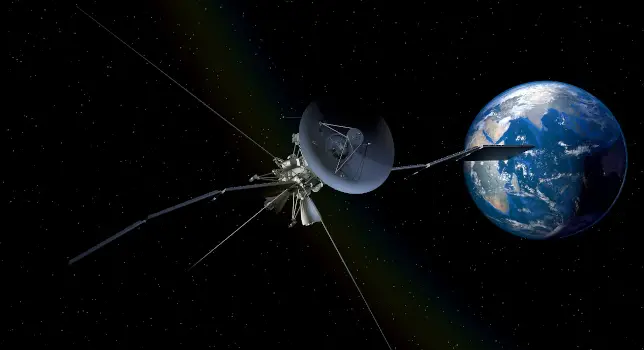Kinetic energy refers to the energy possessed by an object due to its motion. It is defined as the work required to accelerate an object of a certain mass from rest to its current velocity. The amount of kinetic energy an object has is directly proportional to both its mass and the square of its velocity. This means that an increase in either the mass or velocity of an object will result in a corresponding increase in its kinetic energy. For instance, a speeding car with a heavier mass will possess more kinetic energy than a lighter car traveling at the same velocity.
Kinetic energy demonstrates the principle of energy transfer. When a moving object collides with a stationary one, some or all of its kinetic energy can be transferred to the stationary object, causing it to move. This transfer of energy showcases the ability of kinetic energy to be passed from one object to another. Kinetic energy can undergo transformations or be converted into other forms of energy. For instance, when a moving object encounters friction, the kinetic energy is converted into heat energy, causing the object to slow down. Similarly, in the case of a swinging pendulum, the kinetic energy of the pendulum bob is converted into potential energy at the highest point of its swing.
Examples
Bowling ball

The bowling ball in motion, rolling steadfastly towards the pin, possesses kinetic energy that characterizes its energy of motion. As the bowling ball moves across the lane, its mass and velocity contribute to the kinetic energy it carries. This kinetic energy is pivotal for the ball’s ability to interact with the pins upon impact, causing them to scatter. The swifter the ball rolls towards the pins, the greater its kinetic energy, illustrating the direct relationship between its motion and the dynamic energy it retains.
Accelerating car

The car hurtling down the road exhibits kinetic energy, a manifestation of its motion and velocity. As the car accelerates, its mass and speed contribute to the kinetic energy it carries. This dynamic energy is evident in the ability of the car to perform work, such as overcoming resistance or propelling itself forward. The faster the car moves, the greater its kinetic energy, emphasizing the direct relationship between motion and the energy associated with it.
Airplane

The airplane gracefully soaring through the air carries kinetic energy, representing the energy associated with its flying motion. As the airplane propels forward, its considerable mass and velocity contribute to the kinetic energy it possesses. This dynamic energy is pivotal for the aircraft’s ability to overcome air resistance and maintain its flight trajectory. The faster the airplane moves through the sky, the more apparent its kinetic energy, highlighting the direct correlation between its motion and the energy it holds.
Meteor

The meteor drifting through space possesses kinetic energy, representing the energy derived from its motion across the vast expanse of the cosmos. With no external forces acting to impede its trajectory, the meteor’s velocity is a key factor in determining the magnitude of its kinetic energy. This energy manifests as the meteor moves through space, allowing it to interact with other celestial bodies and illustrating the inherent connection between motion and the kinetic energy possessed by objects in the universe.
Rocket

The rocket launched from the Earth displays kinetic energy, indicating the energy resulting from its propulsion and movement. As the rocket’s engines expel thrust, its mass and velocity contribute to the kinetic energy it carries. This dynamic energy is crucial for the rocket’s ascent and journey through space. The faster the rocket moves, the more evident its kinetic energy, illustrating the direct connection between its propulsion and the energetic force it possesses.
Large truck

A large truck running on the highway possesses kinetic energy, reflecting the energy linked to its forward motion. As the truck moves along the road, its considerable mass and velocity contribute to the kinetic energy it carries. This dynamic energy is crucial for the truck’s ability to transport goods efficiently. The faster the truck moves, the more evident its kinetic energy, illustrating the direct correlation between its highway speed and the energetic force it holds.
Avalanche

An avalanche cascading down a mountain represents kinetic energy, exemplifying the energy associated with its downhill motion. As the mass of snow and ice descends, gravity acts on it, converting potential energy into kinetic energy. This dynamic energy is monumental, as the avalanche gains speed and force while traveling down the mountain slope. The swifter the descent, the greater the kinetic energy of the avalanche, highlighting the connection between its downhill motion and the powerful force it exhibits.
Bullet

The bullet propelled from a gun carries kinetic energy, depicting the energy it possesses as it travels through the air. When the trigger is pulled, the chemical energy in the gunpowder is rapidly converted into kinetic energy, propelling the bullet forward. The bullet’s mass and velocity determine the magnitude of its kinetic energy, making it a potent force as it moves through its trajectory.
Cricket ball

The cricket ball released by a bowler carries kinetic energy, illustrating the energy associated with its throwing motion. As the bowler imparts force to the ball, its mass and velocity combine to generate kinetic energy. This dynamic energy is fundamental to the ball’s trajectory and its ability to reach the batsman. The swifter the release, the greater the kinetic energy the cricket ball possesses, highlighting the inherent link between the bowler’s motion and the energetic force exhibited by the moving ball.
Insect

An airborne insect showcases kinetic energy as it maneuvers through the air, representing energy due to its flight. The insect’s motion is powered by its muscles and the surrounding air currents. The kinetic energy of the insect is a product of its mass and velocity, allowing it to navigate through the air with agility. This dynamic energy is evident in the insect’s ability to explore and navigate its surroundings.
Moving bike

When driving a bike on a highway, the motorcycle exhibits kinetic energy, representing the energy attributed to its forward motion. As the rider accelerates, the combined mass and velocity of the bike contribute to the kinetic energy it carries. This dynamic energy is vital for covering distance efficiently and enjoying a smooth ride on the highway. The faster the bike moves, the more noticeable its kinetic energy, emphasizing the direct relationship between its speed and the energetic force it possesses.
Playing cards

When a playing card falls from a tower of cards, it exhibits kinetic energy, representing the energy associated with its downward motion. As the card descends under the influence of gravity, its potential energy is converted into kinetic energy. This dynamic energy is evident in the card’s trajectory as it falls. The greater the height from which the card falls, the more kinetic energy it gains during the descent, emphasizing the connection between its falling motion and the energy it carries.
Roller coaster

The kinetic energy of the wagon on a moving roller is a result of its motion. As the roller moves forward, the wagon gains kinetic energy due to its velocity. This energy is a manifestation of the wagon’s mass and the speed at which it is moving. The faster the roller moves or the heavier the wagon, the greater the kinetic energy it possesses. In essence, the kinetic energy of the wagon on the roller is a dynamic expression of its potential to perform work, such as overcoming resistance or transferring energy to another object upon collision.
Athlete

The athlete sprinting in a race demonstrates kinetic energy, signifying the energy tied to their swift running motion. As the athlete gains speed, their mass and velocity contribute to the kinetic energy they possess. This dynamic energy is essential for the athlete’s ability to cover distance and compete effectively in the race. The faster the sprint, the more evident the kinetic energy, highlighting the direct connection between the athlete’s motion and the energetic force they carry.
Bird

When a bird glides through the sky, it utilizes kinetic energy from its motion. The kinetic energy is a direct result of the bird’s velocity as it moves through the air. The bird’s mass and the square of its velocity contribute to the magnitude of this energy. As the bird soars and maneuvers, its kinetic energy allows it to navigate the atmospheric currents and sustain its flight. The kinetic energy of a gliding bird represents the dynamic interplay between its motion and the fundamental principles of physics, showcasing how energy is inherent in the graceful movement of living organisms.
River water

The flowing water in the river possesses kinetic energy, representing the energy associated with its downstream motion. As the water moves along the riverbed, its mass and velocity contribute to the kinetic energy it carries. This dynamic energy is crucial for various natural processes and can be harnessed for hydroelectric power. The swifter the flow, the greater the kinetic energy of the water, illustrating the direct relationship between its downstream motion and the energetic force it retains.
Clouds

While it might seem counterintuitive, clouds in the sky possess kinetic energy, albeit indirectly. The kinetic energy here is related to the movement of air masses in the atmosphere. As wind blows and air currents circulate, clouds get carried along. The motion of these clouds is a manifestation of the kinetic energy within the air. This energy originates from various natural factors like temperature differentials and the Earth’s rotation, contributing to the dynamic dance of clouds across the sky. Although clouds themselves may not have mass or velocity in the same way a physical object does, their movement is a visible result of the kinetic energy inherent in atmospheric processes.
Skateboarding

The kinetic energy of a person riding a skateboard is a direct result of the person’s motion. As the skateboard moves forward, the person on it gains kinetic energy. This energy is dependent on both the mass of the person and the square of their velocity. The act of riding a skateboard involves a dynamic interplay of balance and control, with the kinetic energy allowing the person to glide smoothly over the surface. Whether performing tricks, cruising, or coming to a stop, the kinetic energy of the person on the skateboard showcases the conversion of potential energy (from pushing off or going downhill) into the energy of motion, illustrating the fundamental principles of physics at play.
Baseball

The baseball thrown by a pitcher possesses kinetic energy, representing the energy associated with its forceful motion toward the catcher. As the pitcher releases the ball, its mass and velocity combine to generate kinetic energy. This dynamic energy is fundamental to the ball’s trajectory and its ability to reach the catcher’s mitt. The swifter the pitch, the greater the kinetic energy the baseball holds, illustrating the inherent connection between the throwing motion and the energetic force exhibited by the moving ball.
Satellite

The satellites orbiting the Earth possess kinetic energy, representing the energy arising from their continuous motion along their orbital paths. As these satellites orbit the Earth, their mass and velocity contribute to the kinetic energy they carry. This dynamic energy is crucial for maintaining their orbits and fulfilling their intended functions, such as communication or Earth observation. The swifter the satellites move along their paths, the greater their kinetic energy, highlighting the connection between their motion and the energetic force they possess.
Formula

The kinetic energy formula, represented as KE = ½ × m v2, establishes a relationship between the kinetic energy (KE) of an object, its mass (m), and the square of its velocity (v). By utilizing this formula, one can calculate the amount of kinetic energy possessed by an object based on its mass and the square of its velocity.
Practice problems
Problem #1
Calculate the kinetic energy of a ball with a mass of 3 kg and a velocity of 6 m/s.
Solution
Given data:
- Kinetic energy of a ball, KE = ?
- Mass of a ball, m = 3 kg
- Velocity of a ball, v = 6 m/s
Applying the formula:
- KE = ½ × m v2
- KE = ½ × 3 × (6)2
- KE = ½ × 3 × 36
- KE = 54 J
Therefore, the kinetic energy of a ball is 54 J.
Problem #2
What is the kinetic energy of a 6 kg bicycle moving with a velocity of 12 m/s?
Solution
Given data:
- Kinetic energy of a bicycle, KE = ?
- Mass of a bicycle, m = 6 kg
- Velocity of a bicycle, v = 12 m/s
Applying the formula:
- KE = ½ × m v2
- KE = ½ × 6 × (12)2
- KE = 3 × 144
- KE = 432 J
Therefore, the kinetic energy of a bicycle is 432 J.
Problem #3
Calculate the kinetic energy of an 800 kg car traveling at a velocity of 3 m/s.
Solution
Given data:
- Kinetic energy of a car, KE = ?
- Mass of a car, m = 800 kg
- Velocity of a car, v = 3 m/s
Applying the formula:
- KE = ½ × m v2
- KE = ½ × 800 × (3)2
- KE = 400 × 9
- KE = 3600 J
Therefore, the kinetic energy of a car is 3600 J.
Problem #4
A rail wagon weighing 400 kg has a velocity of 7 m/s. What is the kinetic energy of the rail wagon?
Solution
Given data:
- Mass of a rail wagon, m = 400 kg
- Velocity of a rail wagon, v = 7 m/s
- Kinetic energy of a rail wagon, KE = ?
Applying the formula:
- KE = ½ × m v2
- KE = ½ × 400 × (7)2
- KE = 200 × 49
- KE = 9800 J
Therefore, the kinetic energy of a rail wagon is 9800 J.
Related
More topics
- Thermal energy
- Potential energy
- Kinetic energy
- Chemical energy
- Electrical energy
- Geothermal energy
- Radiant energy
- Sound energy
- Elastic energy
- Gravitational energy
- Mechanical energy
- Electric potential energy
- Rotational energy
- Photon energy
External links
- https://sciencenotes.org/what-is-kinetic-energy-kinetic-energy-examples/
- https://examples.yourdictionary.com/kinetic-energy-examples.html
- https://www.studysmarter.us/explanations/physics/energy-physics/kinetic-energy/
- https://www.solarschools.net/knowledge-bank/energy/forms/kinetic
- https://www.britannica.com/science/kinetic-energy
- https://www.rankred.com/best-examples-of-kinetic-energy/
Deep
Learnool.com was founded by Deep Rana, who is a mechanical engineer by profession and a blogger by passion. He has a good conceptual knowledge on different educational topics and he provides the same on this website. He loves to learn something new everyday and believes that the best utilization of free time is developing a new skill.
